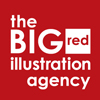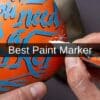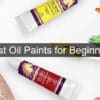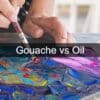How to Blend Crayola Markers

Crayola signature blending markers can add depth to your artwork by allowing you to shade with light and dark variations. There are several blending techniques to keep in mind when using these markers due to how the colors react differently with each other.
Check out our post below to find out the best methods to use Crayola blending markers to improve your DIY projects and artwork.
Layering
Layering is a fantastic way to bring your creative ideas to life. You can also layer with darker colors and a lighter color together. The idea is to blend together the hues of each color by applying gentle pressure.
Use a light color to start coloring the area and gradually move your way up through the shades getting darker. As you move between each shade of the same color, you can go back to the lighter shades and get rid of any visible harsh lines for a smoother transition.
Watercolor paper or thick paper in adult coloring books are also best for this method to ensure that it absorbs the ink well. If you don’t have these options available, be sure to cover work surfaces with newspaper.
Gentle Tip Method
Start by using two Crayola markers of colors that go well together. For example, a sea green marker and a yellow marker complement one another.
Use the darker color and gently rub the tip on the nib of the lighter color. Next, start shading with the lighter marker. You’ll find that the darker color is initially stronger, but the more you color, the lighter that dark shade becomes.
As a result, you can end up with a shaded area with smooth transitions. You also don’t have to worry about your art supplies being stained because the original lighter color will go back to normal after you’ve used it a few times and remove the darker ink.
Using Solvent
This method can be superb for adding skin tones to your work. It’s best to start with a fairly dark color because the solvent makes the ink thinner and lighter. When applying the solvent, be sure not to add too much otherwise, you may end up draining the natural colors.
Use your Crayola markers to create your artwork and leave it to dry. Once it’s dried, apply a small amount of the solvent to a blending brush and gently brush over the area that you want to shade.
If you find that the shade becomes too light, wait for the solvent to dry before using a darker shade marker to bring back the intensity of the color.
Colorless Blending Markers
Using a colorless blender is fantastic for adding texture to your artwork. Make sure not to apply too much pressure to the area that you want to blend. You’ll find that you can experiment with different strokes at various angles to get great blending results.
It’s best to use colorless blenders over the top of layered colors to ensure that the edges become seamlessly smoother.
Also read: Best Colored Pencils For Blending
Conclusion
So, that wraps up our post about how you can use blending markers to improve the quality of your artwork and one last great tip is to practice these techniques in an adult coloring book to gain confidence before applying them to your artwork.
Hopefully, the details found throughout this post have been useful in helping you learn how to blend Crayola markers.
Affiliate Disclosure
In compliance with the FTC guidelines, please assume the following about all links, posts, photos and other material on this website: Any/all of the links on this website are affiliate links of which The Big Red Illustration Agency receives a small commission from sales of certain items, but the price is the same for you. www.bigredillustrationagency.com is a participant in the Amazon Services LLC Associates Program, an affiliate advertising program designed to provide a means for sites to earn advertising fees by advertising and linking to Amazon.com & Amazon.co.uk. Pages on this site may include links to Amazon and its affiliate sites on which the owner of this website will make a referral commission.
FULL TERMS HERE Cookie preferences: cookie preferences

Written By Adam Rushton
Adam has made a name for himself in the illustration industry and is a passionate blogger and writer on the subject of art, illustration and graphic design.
His artwork has been featured in countless publications and used for very well-known media projects. As a professional illustrator for over 20 years, Adams media outlets, a wealth of knowledge, and experience enable him to consult and advise artists and illustrators in this country (from York and Manchester to Southampton and London) and all over the world.



































